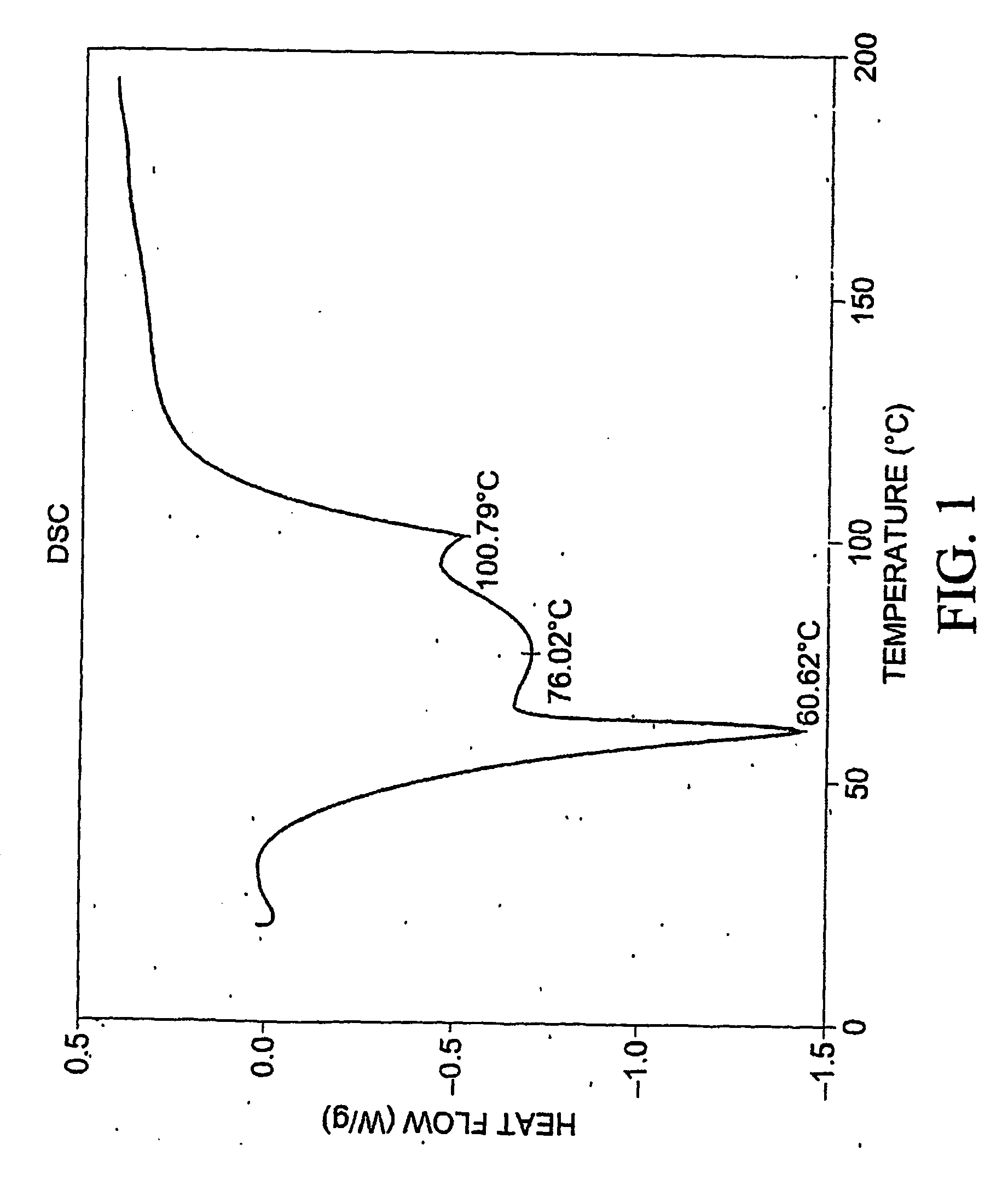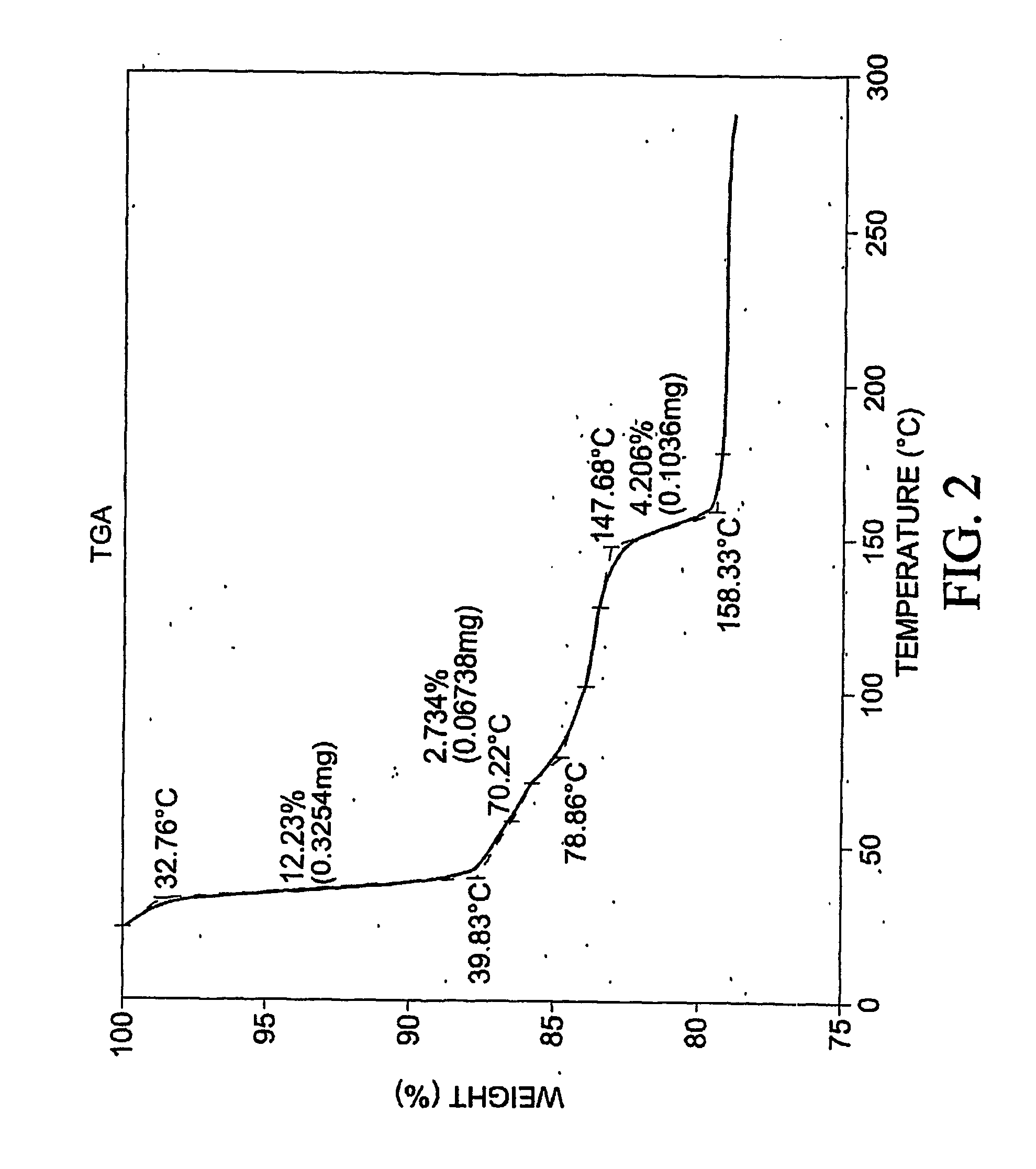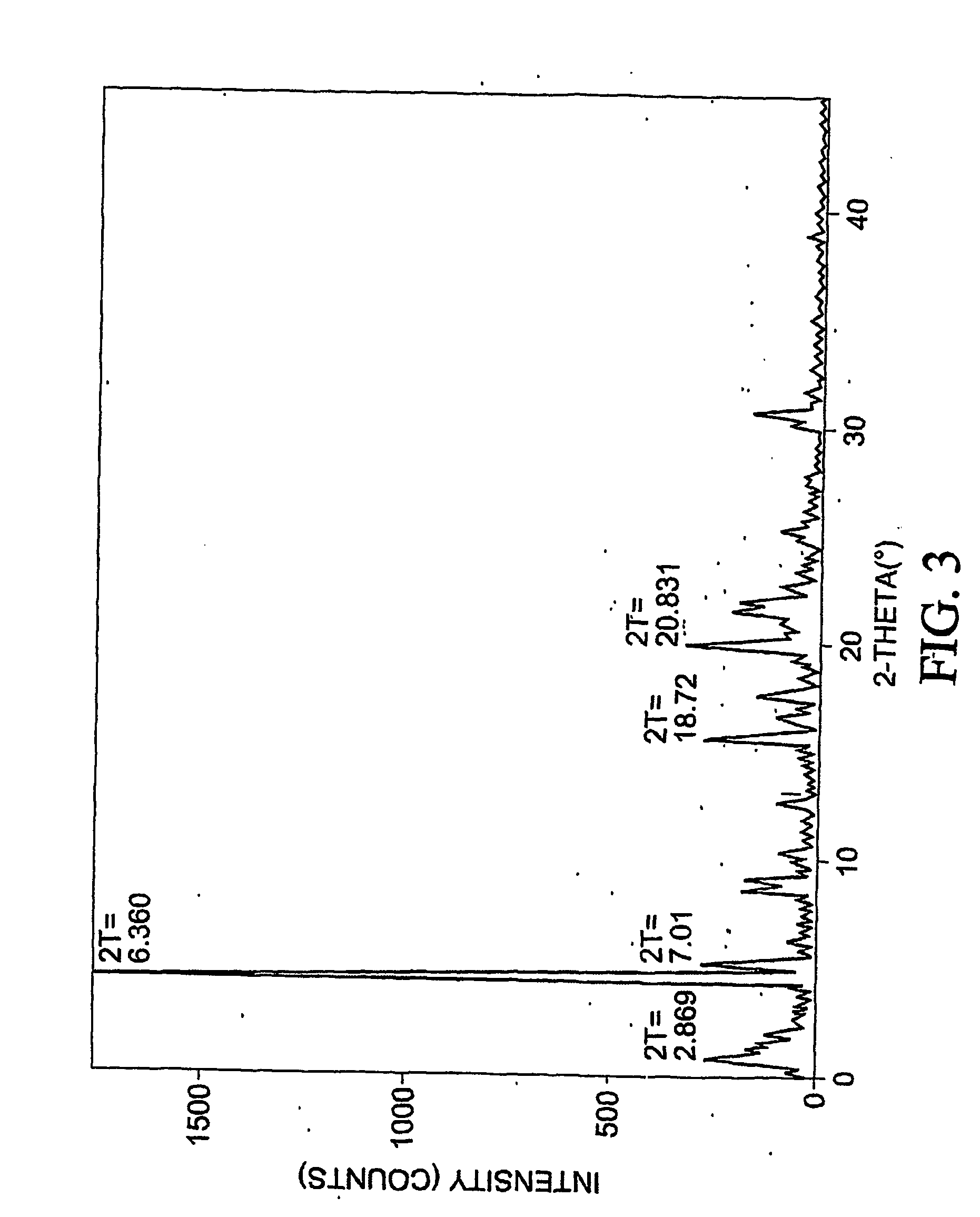Pharmaceutical compositions with improved dissolution
a technology of dissolving and pharmaceutical compositions, applied in the direction of drug compositions, amide active ingredients, powder delivery, etc., can solve the problems of only minimal improvement, 10%, and no effect of enhancer improvement, so as to minimize the amount of api, reduce the amount of enhancer, and reduce the effect of enhancer
- Summary
- Abstract
- Description
- Claims
- Application Information
AI Technical Summary
Benefits of technology
Problems solved by technology
Method used
Image
Examples
example 1
Celecoxib Sodium Salt from Aqueous Solution
[0397] To 77.3 mg of commercially-available celecoxib was added 1.0 mL distilled water, followed by 0.220 mL of 1 M NaOH. The mixture was heated with stirring to 60 degrees C., whereupon an additional 1.0 mL distilled water was added. Solid NaOH (22 mg) was added, and the solid NaOH and celecoxib dissolved. The mixture was heated again at 60 degrees C. to evaporate water. About 15 mL reagent-grade ethanol was added, while the mixture was stirred and heated at 60 degrees C. with air blowing over the solution. Heating continued until the solution was dry. The resulting material was analyzed by differential scanning calorimetry (DSC), thermogravimetric analysis (TGA), and powder x-ray diffraction (PXRD), the results of which are seen in FIGS. 1-3. The product was found to contain about 4.1 equivalents of water per equivalent of salt, although most of all of the water could be contained in the NaOH that co-precipitated with the salt.
[0398] F...
example 2
Celecoxib Sodium Salt from 2-Propanol Solution
[0401] To 126.3 mg of celecoxib was added a 1.0 mL aliquot of isopropanol, and the mixture was heated to dissolve the celecoxib. Sodium ethoxide was added as a solution (21%) in ethanol (0.124 mL solution, 3.31×10−4 mol sodium ethoxide). An additional 1.0 mL of isopropanol was added. The mixture was stirred to obtain a slurry of white crystalline solids that appeared as fine birefringent needles by polarized light microscopy.
[0402] The slurry was filtered by suction filtration and rinsed with 2 mL of isopropanol. The solid was allowed to air dry before being gently ground to a powder. The product was analyzed by PXRD, DSC, and TGA as in Example 1, but a 0.5 mm capillary was used to hold the sample in the PXRD experiment. The compound lost 17.37% weight between room temperature and 120 degrees C. (See FIG. 101). The DSC thermogram shows a broad endothermic region, which is consistent with a loss of volatile components with increasing t...
example 3
Celecoxib Sodium Salt from Aqueous Solution
[0403] Synthesis 1: To a vial was added 29.64 mg celecoxib and 3.00 mL of 1 M sodium hydroxide. The celecoxib dissolved. After a time, celecoxib sodium salt precipitated from solution.
[0404] Synthesis 2: To a vial was added 7.10 mg celecoxib and 3.00 mL of 1 M sodium hydroxide. The celecoxib dissolved. Overnight, celecoxib sodium salt precipitated and formed white, needle-like crystals.
[0405] Synthesis 3: To a vial was added 17.6 mg celecoxib and 10 mL of 1 M sodium hydroxide. The celecoxib dissolved. The vial was placed in a beaker wrapped in aluminum foil and filled with a large tissue for insulation. The beaker was left and celecoxib sodium salt crystals formed within about 12-36 hours.
[0406] Analysis: The product solids from syntheses 1 and 2 were combined and analyzed by PXRD, DSC, and TGA as in example 1, but a 0.5 mm capillary was used to hold the sample in the PXRD experiment. The product salt was found to contain about 4 equiv...
PUM
| Property | Measurement | Unit |
|---|---|---|
| solubility | aaaaa | aaaaa |
| surface tension | aaaaa | aaaaa |
| surface tension | aaaaa | aaaaa |
Abstract
Description
Claims
Application Information
 Login to View More
Login to View More - R&D
- Intellectual Property
- Life Sciences
- Materials
- Tech Scout
- Unparalleled Data Quality
- Higher Quality Content
- 60% Fewer Hallucinations
Browse by: Latest US Patents, China's latest patents, Technical Efficacy Thesaurus, Application Domain, Technology Topic, Popular Technical Reports.
© 2025 PatSnap. All rights reserved.Legal|Privacy policy|Modern Slavery Act Transparency Statement|Sitemap|About US| Contact US: help@patsnap.com



